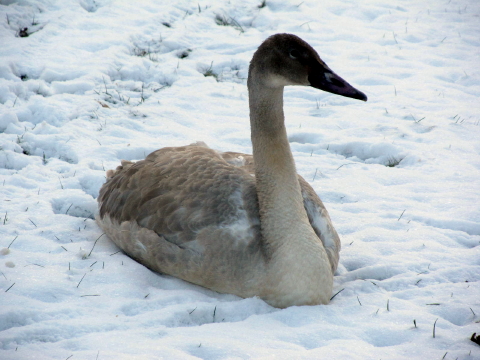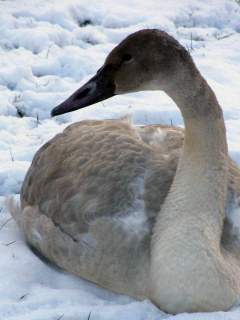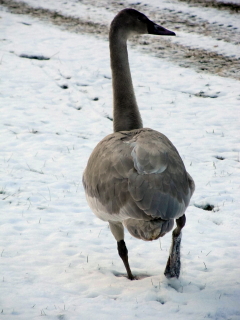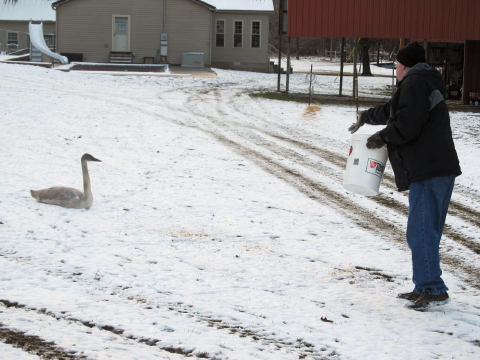| THANKSGIVING 2013



Bird has Thanksgiving Day rest in Sunny Cal
The swan is still resting the day after Thanksgiving.
ID FROM READERS
"I think the swan is a young trumpeter swan. They have a gray tint to feather until they are 2 years old. Tundra swan has yellow patch in front of their eyes, doen't look like the one in the picture has those. Trumpeter swan is a North American Swan." - Sherri Greenlief
"I think it's a juvenile trumpeter swan, just because the head shape is more elongated,
Tundra swans wouldn't be unusual, but there is a breeding population of trumpeters on the Great Lakes, which have not yet frozen over. Freezing is what causes the hardier species of waterfowl to migrate, and this one may have been blown out of Michigan by the weather that came through earlier in the week.:
"Juvenile tundras also have a white or yellowish at the corner of the eye or the base of the bill,
There also appears to be an S shaped kink on the back of the neck in one photo of the young swan resting, which is diagnostic of the trumpeter."
"The trumpeter is the largest bird in North America, minus any errant emus or ostriches running about.
These are the two hardest birds to tell apart, especially when we're dealing with this year's young." - Scottie Westfall III
"Thank you for including the story about the swan. I really enjoyed seeing those photos. To me it looks like a Trumpeter Swan or a young black swan." - Kristin Cottrell
ORIGINAL STORY - There was a fascinating Thanksgiving Day visitor (Thanksgiving 2013) to the suburbs of the Village of Hur, a swan.
The swan made a stop at the Lee Evans property on Rowels Run, appearing exhausted and needing a rest, landing in a grassy field.
The bird spent most of its time Thursday afternoon tucking its head for a nap, and appeared disinterested when Evans dropped some corn nearby.

Lee Evans gives bird a little feed
The bird did manage to frighten some deer away from its position.
Evans said the best identification he could find in a bird book was a Tundra Swan, which migrates from the far Canadian/Alaska north to as far south as the Carolinas.
But the migration season is over.
Maybe a reader has a better identification? | 


